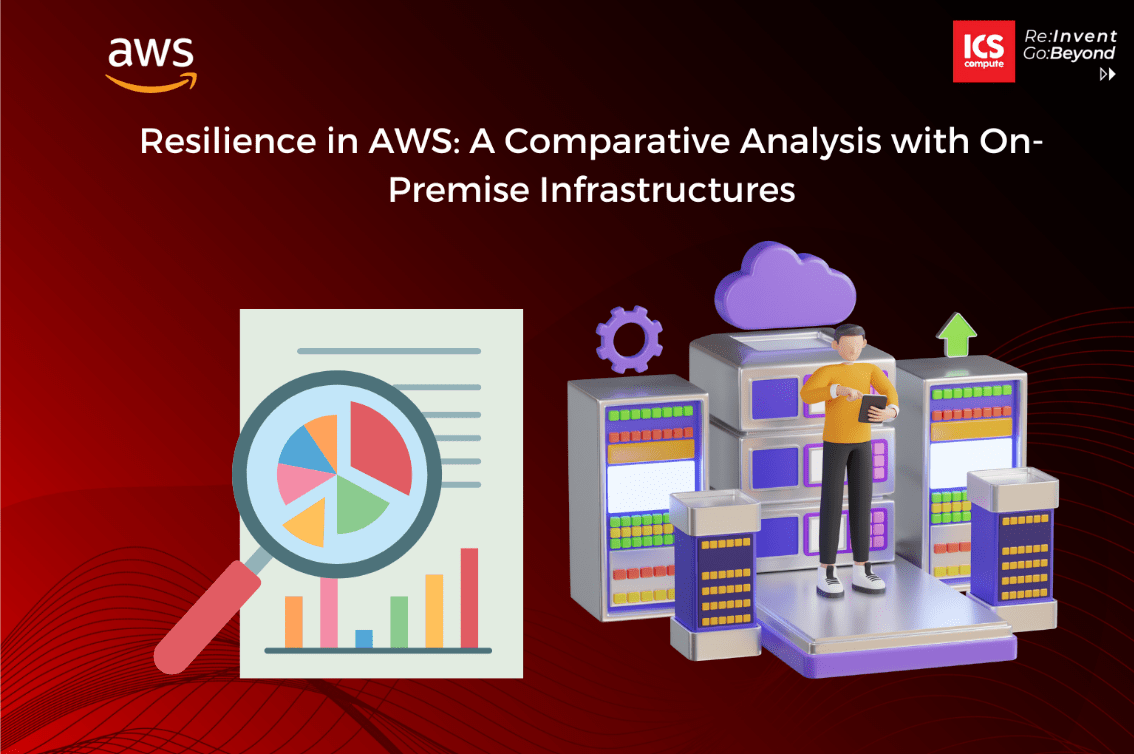Resilience in AWS: A Comparative Analysis with On-Premise Infrastructures

In the digital era, the resilience of IT systems is a crucial factor that can significantly affect a company’s success. Ensuring consistent and reliable service, particularly in the face of unforeseen disruptions, is of paramount importance. In this blog post, we will delve into the concept of resilience in Amazon Web Services (AWS) and draw a comparison with traditional on-premise infrastructures.
What is Resilience in IT?
Before delving deeper into the topic, let’s first define resilience in the IT context. Resilience refers to the ability of an IT system to function correctly, consistently, and effectively even under stress, and to recover from or adjust easily to failures or disruptions. This can involve adapting to changes, swiftly recovering from disturbances, and maintaining operations even during a crisis.
Resilience in On-Premise Infrastructures
Traditional on-premise infrastructures, while being entirely under the control of the organization, face a multitude of challenges when it comes to achieving optimal resilience. They require substantial resources, including physical space, equipment, and skilled personnel.
In terms of redundancy and recovery, on-premise solutions can be costly and complex. To create a resilient system, businesses need to invest in redundant hardware, have a robust backup solution, and implement disaster recovery strategies. This not only involves significant initial investment but also incurs ongoing costs for maintenance and upgrades.
The on-premise infrastructure’s resilience is also largely dependent on the expertise of the IT team in mitigating disruptions and minimizing downtime. Hence, there’s an element of human error, which could potentially affect the system’s resilience.
Resilience in AWS
AWS, a leading cloud service provider, offers a variety of features and services designed specifically to enhance resilience. AWS’s infrastructure is spread across multiple geographic regions and availability zones, thereby reducing the potential impact of a disaster in a single location.
One of the primary advantages of AWS is its scalability, which allows resources to be ramped up or down based on demand. This flexibility helps ensure that services remain available even under increased load or during an unexpected event.
With AWS, you have access to services like Amazon S3 for storage and backup, Amazon RDS for database instances, and AWS Elastic Load Balancing to distribute traffic, all designed to boost resilience. Services like AWS Auto Scaling and Amazon CloudWatch allow for proactive monitoring and automatic adjustment of resources, further enhancing resilience.
Additionally, AWS also offers built-in security features and compliance capabilities, contributing to an overall robust and resilient infrastructure.
Comparing Resilience: On-Premise vs AWS
The AWS Well-Architected Framework defines resilience as having “the capability to recover when stressed by load (more requests for service), attacks (either accidental through a bug, or deliberate through intention), and failure of any component in the workload’s components.”
A resilient workload not only recovers, but recovers in an amount of time that is desired. This is often called a recovery time objective (RTO). Within a workload, there is often a desire to not degrade, but to be capable of servicing the workload’s requests during the recovery of a component. The study and practice of this implementation is known as Recovery Oriented Computing.
The other factors impacting workload reliability are:
- Scalability and Redundancy: Scalability refers to the ability of a system to handle increased workload by either adding resources (scale out/up) or enhancing existing resources (scale up). In AWS, services like Amazon EC2 (Elastic Compute Cloud) and Amazon RDS (Relational Database Service) can be seamlessly scaled to meet increasing demand. This flexibility helps ensure that your applications remain available and performant, even under heavy load.
Redundancy is the duplication of critical components or functions of a system with the intention of increasing reliability. AWS services are designed with redundancy in mind. For example, Amazon S3 automatically stores your data across different systems to achieve high availability and durability. Similarly, AWS allows for the easy setup of redundant databases or servers across different availability zones, further enhancing the resilience of your applications. - Cost Effectiveness: While there are costs associated with AWS services, they are often more economical compared to the substantial investments required for an on-premise infrastructure.
For instance, with AWS, you only pay for the resources you use – a concept known as “pay-as-you-go”. This model eliminates the need for hefty upfront costs and allows for flexibility as your business needs change. On the other hand, on-premise infrastructures require considerable capital expenditure for initial setup, which includes purchasing hardware, securing physical space, and hiring IT personnel.
Maintenance and upgrades also add to the ongoing costs of on-premise systems. Plus, if a server fails, it could result in significant repair or replacement costs. Conversely, AWS manages maintenance and upgrades behind the scenes, providing a more predictable cost structure and reducing the risk of unexpected expenditure. - Security and Compliance: Both on-premise and AWS environments can provide robust security measures, but AWS includes many inbuilt features that could require considerable effort and expertise to replicate on-premise.
AWS offers a wide array of security features, including data encryption, identity and access management, network firewalls, and threat detection. AWS also works to ensure that its services comply with various global and regional regulatory standards, offering compliance-ready frameworks to users. This considerably reduces the compliance burden on businesses.
In comparison, replicating these measures in an on-premise environment requires a specialized, dedicated IT team, robust security policies, and constant monitoring – adding to the complexity and cost of managing on-premise systems. - Geographical Distribution: AWS’s extensive global network of data centers offers superior geographical distribution compared to most on-premise infrastructures. This distribution provides additional resilience as it mitigates the risk of a localized event (like a natural disaster) causing total system failure.
With AWS, you can leverage multiple Availability Zones (AZs) and regions to distribute your application and data, minimizing the risk of service disruption.
In contrast, achieving geographical distribution with on-premise infrastructures is resource-intensive, as it would require setting up and maintaining multiple physical data centers in different locations. This is often beyond the reach of most organizations, making them vulnerable to localized disruptions.
In conclusion, while on-premise solutions offer complete control and can be tailored to specific needs, they may pose significant challenges in achieving high resilience without substantial investment and expertise. On the other hand, AWS provides a wide array of services designed to optimize resilience, offering scalable, secure, and cost-effective solutions.
In today’s dynamic digital landscape, leveraging cloud services like AWS can be a strategic move towards enhancing resilience and ensuring business continuity.


